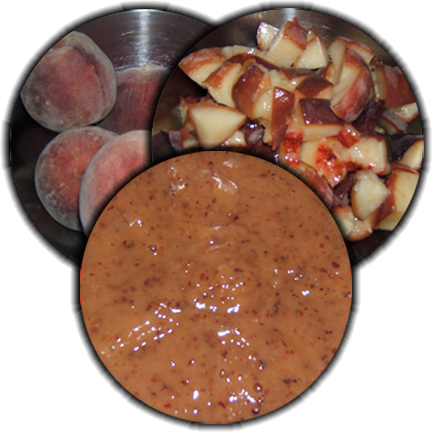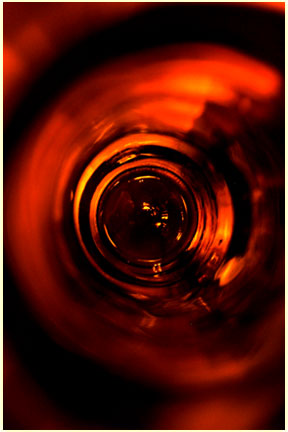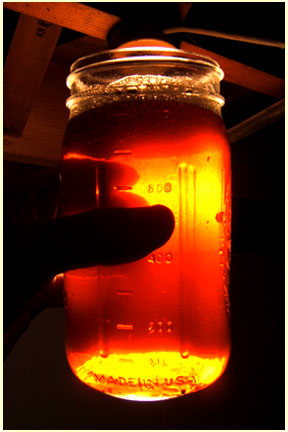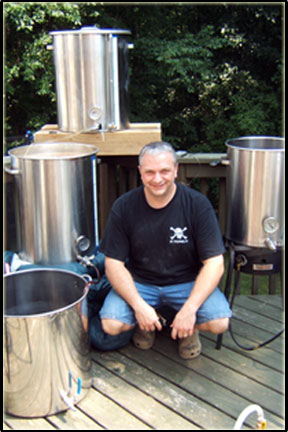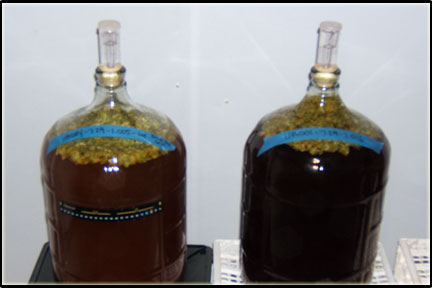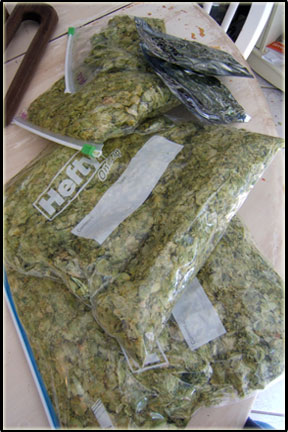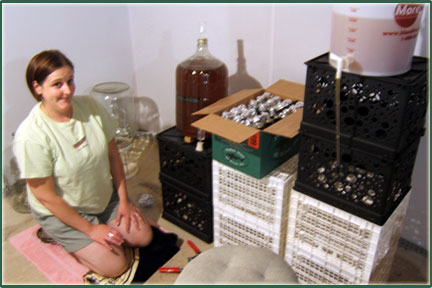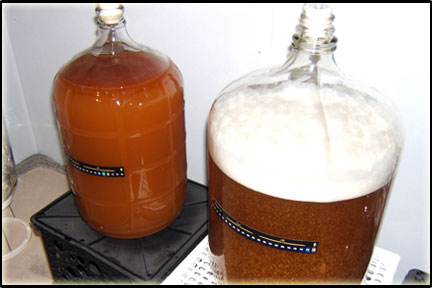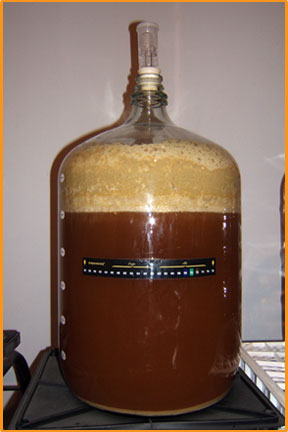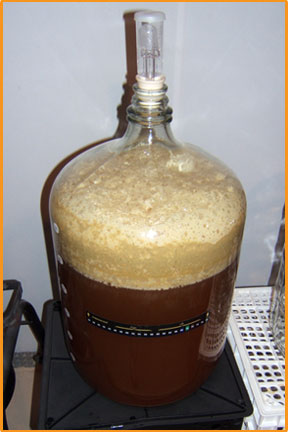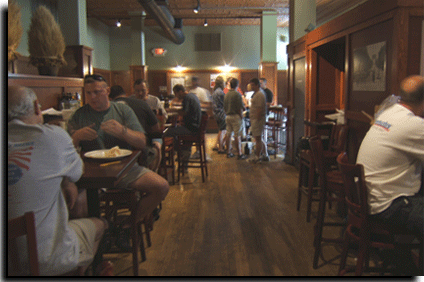Saturday was the 5th Annual Fool Circle Beer Tasting. Per usual it was blast. This year all of the Inner Circle were able to attend, so in attendance was myself, Karen, Dave, Richard, Todd, and Robert. These have pretty much been the people with the strongest connection to Fool Circle since the beginning, thus at some point along the way during one of the tastings they were dubbed the Fool Circle Inner Circle. Dave also made “backstage passes” for us all this year which turned out to be a hit, if you look through the pictures you can see the included graphics. Below is a slide show of the pictures from the night, but if you’d rather look at them individually you can see them here.
For the tasting I decided we would do the blind-side-by-side variant. In this way, all the bottles are marked before hand with what beer it is, then they are all placed in brown bags. The bags are all mixed up and each person has an opportunity to re-mix the bags too, in this way no one can no where any one beer is in the line up. This year we had 16 beers to taste with an additional 3 not making the cut, so it had the potential to be 19 beers, but that didn’t happen. The 3 that didn’t make the cut were the Pike Creek Pale Ale, the Angler Ale 2, and the Cocoa Pebble Oatmeal Stout. The first two didn’t make it because I forgot to save one of each for the tasting (oops!) and the last didn’t make it for it was a failed experiment that met its doom down the drain.
I had stated before the tasting that I was not going to be able to win this year. The first three years I had declared I was not allowed to win. Then last year I thought of doing it as a blind tasting (previously I poured each beer in a seperate room) and decided that I would allow myself to win if I guessed the most correct and everyone was OK with that. Last year I guessed 10 out of 12 correct and was happy I had won, but felt a little bit bad for I won by a large margin. So, this year to help keep things fair I decided I could not win. Richard brought up the point that if I got a perfect score (16 out of 16) that I should be able to win, and all agreed. 16 out of 16 would be unheard of, so I decided that was fine.
The pouring was great, it took a good 15 minutes or so to pour all the beer and you could feel the anticipation building for no one was allowed to taste until all were poured. Everyone was sniffing and commenting about the beers, but only spoke in reserved comments as not to elude to heavily to what any one beer was to not give someone else an advantage. Since I was pouring and not sniffing it was killing me to hear the comments, I really wanted to know what they all were. Once all the beer was poured the tasting commenced and the whole feel of the room changed for a good 10 minutes or so, with everyone much more serious than before. I initially sniffed all 16 beers too prior to tasting and knew 7 of them just by smell, it was really neat. After that first 10 minute period though, things got good and goofy as expected. Each person gets about 2oz of 16 beers, so a little under three 12oz beers in about a 15-20 minute span, it makes it quite intersting fast. Overall the break-down went like this: Richard with a big 3 correct, Karen & Todd both with 8 correct, Dave with a big 10, Robert with a huge 12, and fortunetly (and unfortunetly) Brian (me) with an unbelievable 16 out of 16 correct!
It was great! Not counting Richard (who is really going to shark us all one year) any of the other scores could have been winning scores in the past, this was a HUGE scoring year. Part of that I think goes to the whole side-by-side factor so you can compare and contrast, versus in the past it was one-at-a-time and it was an all or nothing guess. Additionally it was crazy in the sense of there was like 4 different Pale Ales and 4 different Stouts that people had to figure out. No one really grumbled too much after I won since they all had agreed that if I got a perfect score I would win, but I did feel a little guilty. As others pointed out to me, I am the one who made all the beer, have drank multiples of each beer, and have a recognized BJCP palate. Oh well. As a major token of appreciation, not because I guessed them all right, everyone chipped in and bought me a $100 gift certificate to More Beer, my favorite homebrew resource – I was stoked and flattered.
After the tasting it was obvious everyone was starving, so Robert and Todd both had brought stuff for appatizers so we had a warm chili dip and grilled Old Bay BBQ shrimp – both were delicious. I don’t know if it were the appatizers, the beer, the Cornhole, or the medicine but somehow we didn’t eat dinner until about 9:45! Once again, everyone was starving. We had two differnt London Broils, some grilled Vidalia onions and Portobella mushrooms, au gratin potatoes, carrots, rice, and something else. We had tons of food and it was all delicious. Unfortunetly, since it had gotten later than anticipated, Todd was not able to stay for dinner for he needed to get home to his children.
After the tasting and before dinner and after dinner and before we called it a night, the rest of the night was basically filled with playing Cornhole in the backyard. Cornhole is an addictively simple bean-bag toss style game that is too much fun to play, quite simple, and easy to play while drinking. We actually had two sets to play with for Dave finally acquired his promised set from the door prize from the Delaware Digital Scavenger Hunt. We basically only played with one set since we had either 5 or 6 players, not really enough to merit a second set. But we did try a varient on the game and played with three sets of bags so all could play at one time on oneset. The play went relatively smoothly, it was the scoring that was a little hairy. Fun to try, but not something I would suggest we try again. We pretty much played until past 1AM when we were “asked” to stop playing by some of Delaware’s finest, I appologize to the neighbors. After that things quickly rapped up. Robert hit the road and everyone else stumbled back to a bed to stay the night.
It was really a great time and I look forward to it each and every year. If you’d like to recap the past you can visit these posts here: 2006, 2005, 2004, 2003. And in our usual style, there are a few colorful quotes that have made it through the tasting. Either we weren’t writing down as many, people weren’t as witty as usual, or I can’t read Dave’s handwriting, but here are the few we have:
- “I just drew on my face with permanant marker.”
- “You’re a cheesy-belly.”
- “Fuck the scoring – Whoever can get them down fastest is the Grand Pooh-Bah”
- “#14 – Smoked Shreaded Wheat?” (MacRae Scotch Ale ’05)
- “You should have seen her on that pole with her wheelchair.”
- “OK – What the fuck was THAT!?” (Gnarleywine)
- “Ugh – It makes me want to take a bite of bread.” (Gnarleywine)
- “We have enough food to choke two donkeys.”
